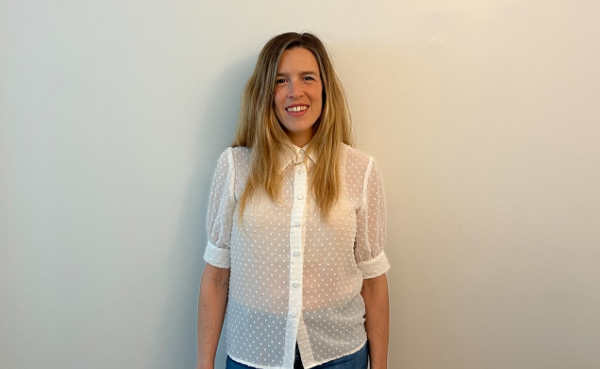The Barniol-Xicota Lab up and running; between chemistry and biomedicine
The Barniol-Xicota Lab up and running; between chemistry and biomedicine
This month at MELIS-UPF we welcome a new principal investigator, Marta Barniol Xicota, who joins us through the tenure-track recruitment programme at UPF.

Marta Barniol Xicota (Sant Cugat, 1988), is a pharmacist and a PhD in medicinal chemistry from the University of Barcelona, where she developed small molecules to improve the properties of membrane proteins and ion channels. A work of “pure and simple chemistry” that soon migrated towards medical chemistry.
There’s no denying that Marta is driven by her restlessness and desire to learn. During her doctorate she made three stays; in the United Kingdom (University College London), in the United States (University of California San Francisco) and in another laboratory in Barcelona (Institute of Molecular Biology of Barcelona) in order to learn about molecular biology and protein crystallography in particular. She later continued with two postdoctoral stays, first in Belgium (Catholic University of Leuven) and then, again, in the United States (Stanford), leading her to find her place, between chemistry and biomedicine, to start her research group at the MELIS and teach the students of the Faculty that “chemistry has many applications in biomedicine and doesn’t have to be a subject to be hated!”.
Chemistry notes
In her research career, Marta has developed the application of lipid nanodiscs (SMALPS) to isolate membrane proteases. “Using traditional isolation techniques, proteins found in a lipid environment lose their activity. In contrast, when we use nanodiscs, which are small polymers, we can keep the proteins in a state much closer to their native one and thus study their biological activity more reliably”, she explains.
To conduct her assays for membrane protein activity, she has also used chemical probes, small synthetic molecules specific for a protein that have a reporter. In addition to activity assays, “chemical probes have many other applications. They allow you to visualize a protein in a cell line or run diagnostic tests. Or, if you have a drug that interacts with a specific protein, they allow you to see what other proteins interact with the drug”.
She has also incorporated these probes into peptides from a “phage display”, a technique that uses bacteriophages to study the interactions of proteins with each other, with other peptides or with DNA, “connecting” phenotype and genotype. That is, the proteins under study with the DNA that codes for them.
The Barniol - Xicota lab
The goal of her lab, where a PhD position is being offered right now, is to develop chemical probes to study membrane enzymes related to lipid metabolism that are not fully characterized.
“We know that some of these enzymes are overexpressed in some types of breast cancer, especially those with a more aggressive profile, and it is thought that these enzymes may be possible targets to curb the aggressiveness of some breast cancers, because after a knockout, metastasis has been curbed. But it has still not been possible to find a molecule that specifically targets them or has enabled determining their activity”, she explains.
"I’d rather be in a diverse department where I have the possibility of establishing collaborations with groups that work with organoids or animal models and that can complement my research than being in a department where everyone does the same thing”
The Barniol-Xicota Lab will be a chemistry lab in a department where biomedicine and life sciences abound. So, the fact that the lab does not have resonance equipment, which can be found in any chemistry department, is not a major drawback. “In Barcelona there is other equipment I can use! I’d rather be in a diverse department where I have the possibility of establishing collaborations with groups that work with organoids or animal models and that can complement my research than being in a department where everyone does the same thing”, she adds.
She believes the genomics and proteomics facilities will be essential to perform good assays to combine chemical probes and “phage display”.
